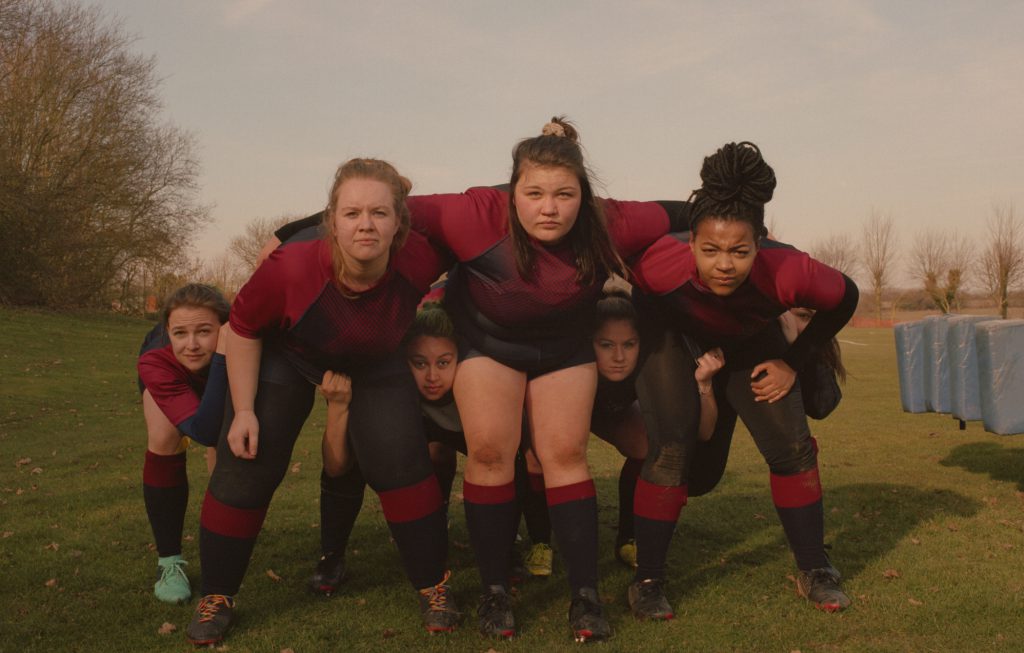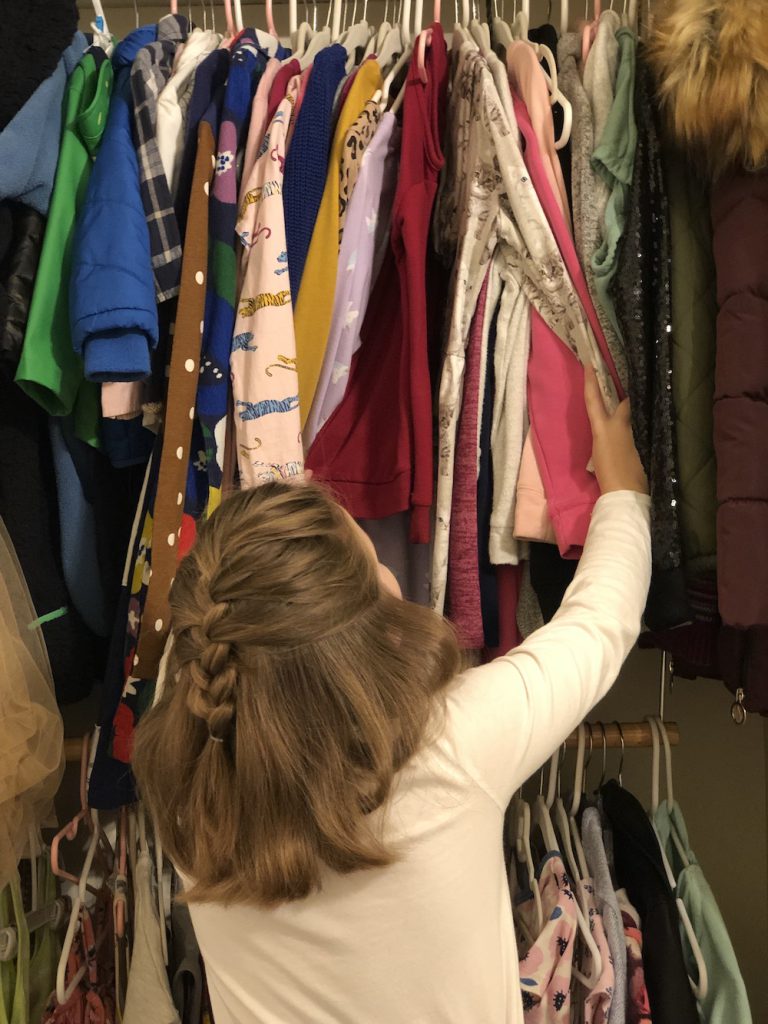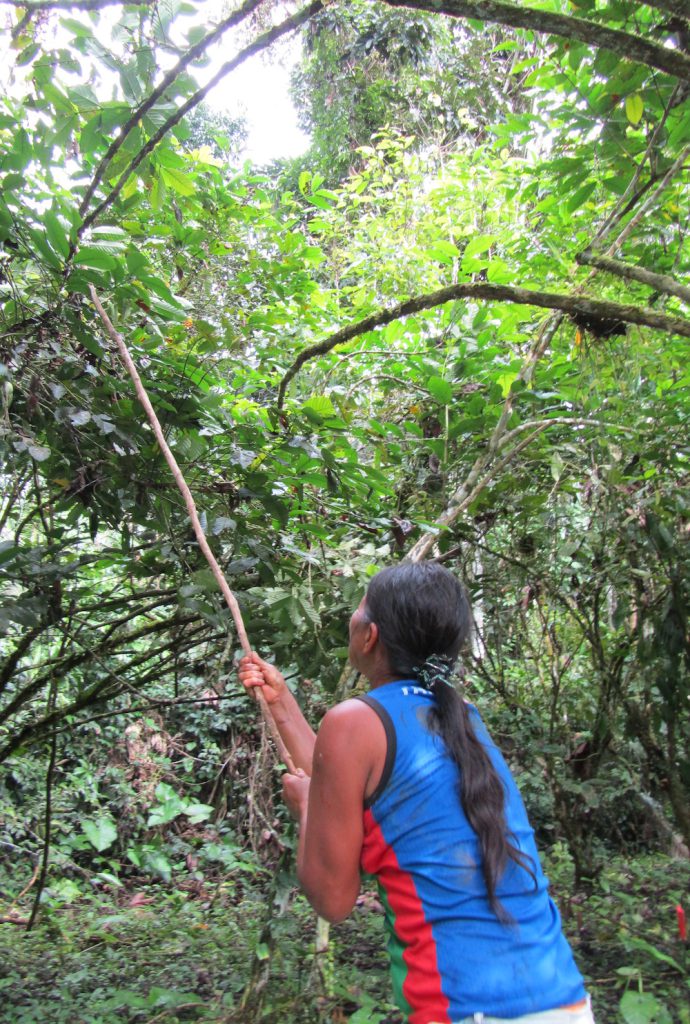Consumer Culture Won’t Lead to Body Positivity

I have an 8-year-old daughter. From time to time, I catch her staring at her reflection in various shiny household surfaces, turning to the side, admiring her waist, and smoothing her hair.
“Mom, do you like this lip gloss?”
“Mom, should I wear my hair down?”
“Mom, why are these called ‘skinny’ jeans?”
These questions come from a concerned and perceptive young mind, one that knows exactly how U.S. society will value her—the “prettier” you are, the more you are “worth.” Kids who bully others at school, commercials on TV, clothing catalogs, and casual “anti-fat” comments by other adults in her life have all taught her that she is an object to be looked at.
The growing body positivity movement questions these beauty standards by urging acceptance of bodies of all shapes and sizes. This movement, along with market pressures, has compelled major U.S. fashion brands, including Old Navy and Aerie, to expand their sizing and marketing strategies to be more inclusive. Conversely, brands like Victoria’s Secret have faced criticism and dipping sales for their refusal to embrace widespread calls for body inclusivity and their persistent maintenance of unrealistic body standards.
While I wholeheartedly support the push for more inclusivity in fashion, I worry that focusing so much attention on the lack of diverse size representation in the fashion industry distracts from the deeper issues at hand. The real problem facing my daughter and other young people is twofold: teaching kids that bodies are objects to be scrutinized, and then telling them that buying stuff is the way to deal with insecurities generated by narrow appearance standards.
Public representations of more diverse body shapes and sizes may help combat body insecurities—but not when they’re created and disseminated only in service of consumption. Body positivity in this form perpetuates a vicious cycle: People learn to see capitalist consumption as the solution to the problems caused by capitalist consumption. This approach will not lead to a greater sense of self-worth or to more inclusive, fair communities.
The stakes are high. Consumer capitalist demands within the global fashion industry have generated unspeakable human and environmental rights violations. Supply chains “follow poverty”—exploiting laborers in poorer countries to bring cheap clothing to shoppers in wealthier countries. Manufacturing and transporting clothing taxes an already fragile planet, contributing a whopping 10 percent of global greenhouse gas emissions.
Instead of continuing these harmful cycles, we need to give children critical thinking skills so they can push back against a clothing industry that wraps up their self-worth in buying jeans of any size.
As an anthropologist who has spent a long time studying gender norms and social change, I believe that we have a lot to learn from how other societies think about bodies. Among Indigenous Kichwa communities where I’ve done fieldwork, for instance, people tend to think about their bodies in terms of what they can do—or how strong they are—rather than how they look.
That’s the model I’m trying to teach my daughter—so far, with limited success.
The truth is, I have struggled with my body my entire life. When I was a teen, I realized that I could be as skinny as I wanted (correction: as skinny as U.S. society wanted me to be) if I only tried hard enough.
So, I ate the same meals over and over again. Dinner was a portion of chicken breast no bigger than the palm of my hand, two containers of “no sugar added” applesauce, and 18 peanuts. Eighteen peanuts: no more, no fewer. Folks in my life would laugh as I counted them out.
Thinking back, I am troubled that no one asked me what I was doing or suggested that I stop. Indeed, the skinnier I became, the more positive reinforcement I received.
It wasn’t until I was immersed in graduate school in anthropology that I was able to teach myself that what I was doing was part of a larger societal problem, one that amounts an individual’s self-worth to their appearance and propagates feelings of guilt and shame around eating. The work of culture critic and gender studies scholar Susan Bordo, in particular, may have saved my life.
In Unbearable Weight: Feminism, Western Culture, and the Body, a classic feminist text, Bordo argues that U.S. culture is dominated by competing tensions: Women are expected to achieve a “perfectly managed and regulated self” while living in a consumer culture that makes this impossible. Overwhelmed by the drive to consume, women’s self-worth becomes about how well they are able to “control themselves.” Thus, women are set up for failure, and failure manifests in struggles with eating and body image.
I can’t shake the feeling that I’m failing my daughter.
As I pursued my studies, I began to see that many women don’t have time or energy to fight a fashion industry that capitalizes on their insecurities and soothes them through consumption. Some numb themselves through filling their online shopping carts as they scroll through the latest fast fashion trends. Self-worth disguised as blue jeans is always just one click away.
Not all people who identify as women face the same pressures, however. Anti-Fatness, for example, also intersects with damaging ideas around race, sexuality, ability, and other markers of identity. The cultural need for a society of bodies “in control” intensifies unjustified fears of “unruly” bodies that do not fit the socially constructed ideal of White, thin, nondisabled, cisgender bodies.
Sociologist Sabrina Strings provides an in-depth account of how anti-fatness is rooted in anti-Blackness. She traces the history of “black sensualism,” or the stereotypical framing of Black women as “pathologically prone to sexual and oral indulgences” that make their bodies fat. Strings shows how medical and public health discourses attempt to discipline Black women and their bodies by treating them as “diseased” and thus in need of control.
In other words, anti-fatness serves not only to control women but as a tool to uphold white supremacist, ableist power structures.
My daughter can’t yet read feminist texts or fully understand critiques of global capitalism. But we regularly discuss how the purpose of advertising is to convince us to buy things through images that are highly fabricated. We talk about how, over time, what is considered beautiful has changed. We also talk about the purpose of food: to nourish us and to fuel us.
Most importantly, we talk about what our bodies can do. We talk about how grateful we are for our bodies—the only bodies we will ever have—that let us swing, and swim, and scooter, and laugh, and hold her baby brother. Our bodies are so much more than pretty things to look at. As the mantra in my house goes: “I am strong. I am brave. I am smart. I am enough. I love myself. And I love you.”
I can’t take credit for this way of thinking.
As an anthropologist, I have had the privilege of working with Indigenous Kichwa women in a small riverside community in the Ecuadorian Amazon. And while my fieldwork took place a decade ago, I carry some important lessons from that time with me still.
My research explored questions of the body, gender, and social change. How did Kichwa women think about their bodies? Were there generational differences between school-bound girls and their farmer mothers and grandmothers? What impact, if any, was outside media like internet and satellite TV having on their beauty ideals and body image?
While Western beauty ideals that valued thinness were not totally absent in the community, I found that, like their mothers and grandmothers, young women still maintained a reverence for women strong enough to care for kin. Theirs were bodies that tended to farms and families.
Ironically, one way Kichwa women talked about their bodily strength was by referencing chicken—though not the flavorless, palm-sized portion of white meat I used to call dinner. One Kichwa woman likened herself to the tough, lean, free-range chickens that wander around their community: “pollos criollos.” This distinguished her, she said, from the “store-bought chickens”—fattened on industrial farms, then plastic-wrapped and piled high on the refrigerated shelves of the Super Tía, a gleaming, new supermarket located in a nearby city. This woman proudly saw her sturdy body, shaped in and by the land, as superior to the bodies of those accustomed to city living.
Another woman remarked that Kichwa folks are “people of manioc and plantains”—in other words, people built out of the demanding work of farming and of the staple foods this work produces for kin.
Community members were troubled by the emergence of damaging new appearance standards. However, they were buoyed by a powerful cultural admiration, even among girls and teens, for what strong women could do. This focus on strength and care for others mitigated the problems associated with objectifying bodies to increase consumption. For the Kichwa I knew, one’s self-worth was ultimately tied to having a body that produces and acts on behalf of others’ needs.
This, of course, is what’s often missing from the messaging girls see and hear in the U.S. context. In the U.S. ideal, self-worth hinges on consuming in order to have a body that conforms to others’ perceptions. Worth depends on what women and girls can buy. And that’s the problem we in the U.S. need to face if we want to truly embrace body positivity.
I can’t shake the feeling that I am failing my daughter. Despite my best efforts to teach her that self-worth does not hinge on appearance, she still knows that, in a pinch, the TV screen makes a good mirror. Our household mantra about self-love rings hollow without public reinforcement.
So, should fashion retailers continue to cater to and highlight more diverse bodies? Sure. But representation alone doesn’t fix the problem of objectification or provide an alternative to consumption.
Instead, we in the U.S. need to teach children that self-worth cannot be found in a new pair of jeans, even ones that come in a variety of sizes. It comes from nourishing their strength, bravery, and critical thinking skills so they believe they are enough and love their selves and bodies unconditionally—even in the face of a fashion industry whose bottom line depends on giving them every reason to believe otherwise.

































